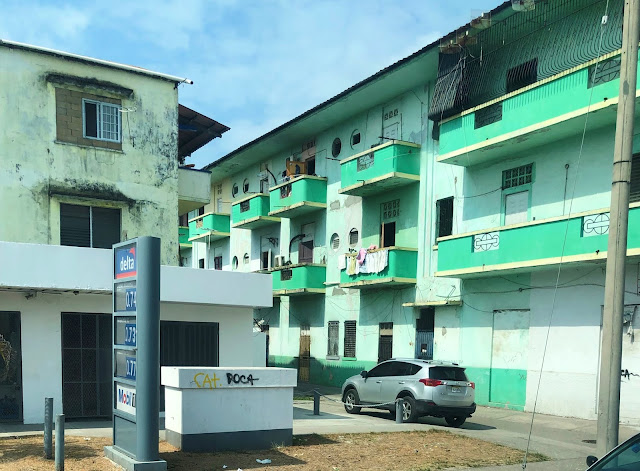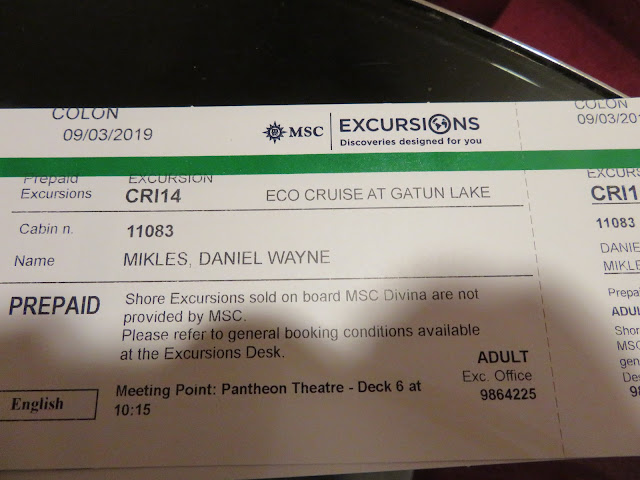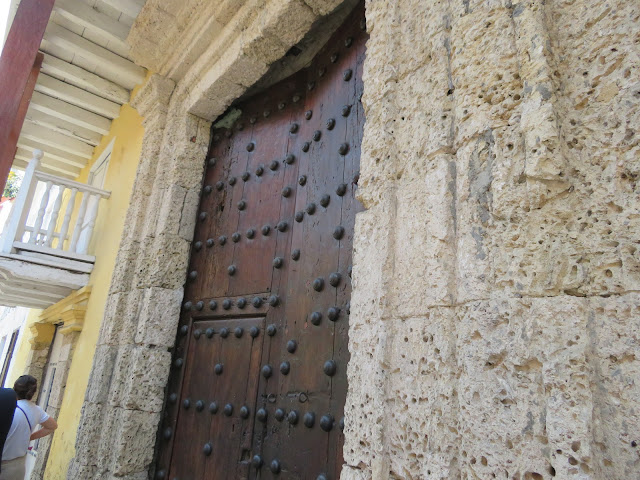We signed up for an Eco Cruise on Gatun Lake (pronounced
Gaw-Toon), which included a short hike through a rainforest, a boat ride on the
lake through more forested areas, and promises to see spider monkeys, sloths,
crocodiles, and water birds. And we did, in fact, see all those things, but not
very many of any, and they were pretty hard to spot. But our guide, Jorge, was
very knowledgeable, and always knew where to look and did a good job pointing them
out to us. He also gave us a comprehensive overview of the area and a history
of how the building of the canal shaped the geography and history of the area.
Gatun Lake is a manmade lake, and is actually part of the overall Panama Canal
system.
The neighborhood of Colón our tour bus drove through to get us from the cruise port to where the tour started was
very sobering. We witnessed such stark poverty, it was difficult to think about people living in these squalid conditions. Mountains of
trash were piled high everywhere you turned. People were sleeping on sidewalks,
barbed wire wrapped around high walls, and what looked like demolition debris from
torn down buildings littered the streets. Open sewage drains ran along many of the roads, right alongside sidewalks and housing entrances. It wasn't always like this.
During its heyday Colón was known for its
citizens’ civic pride, orderly appearance, and outstanding native sons and
daughters. But politically instigated riots in the 1960’s led to the start of
the city’s decline, and was further accelerated by several military
dictatorships between 1968-1987. There are efforts underway today trying to
restore the city to its former standing. I included some pictures of the
poverty stricken areas taken from our bus, trying to capture a feel for what I
saw. I can’t help but wonder what the locals think about the busloads of
tourists coming through…
This neighborhood was in the immediate area surrounding the port where we docked. If we hadn’t taken this excursion, we probably would not have ventured outside the ship, and we would never have seen another side to Colón.




































































